The Snake Venom
In the collective imagination, snakes frighten people (and rightly so!) because they can be very dangerous ⚠️. Snake venom can be fatal to humans if bitten. But have you ever wondered why snakes have venom, and how it works?
In this article, we'll introduce you to the Origin of Snake Venom 📖 and how it works. Then you'll discover its impact on medicine, and the unsuspected virtues it can have!
1) Snake Venom
A) What is snake venom?
It may sound like a silly question, but it's not!
In snakes, venom is a toxic ☣️ yellow liquid produced in a gland attached to each fang. The composition of snake venom is a complex mixture of proteins, peptides and other organic and inorganic molecules. These molecules have evolved to harm, immobilize or kill. The primary function of venom is to facilitate the digestion of prey.
Each species of Venomous Snake produces its own particular venom. Although these venoms are composed of a complex mix of molecules, they have always been classified into three main types:
Cytotoxic: destroys body cells 💀. Cytotoxins cause the death of most or all cells in a tissue or organ, with a condition called necrosis.
Neurotoxic: chemical substance toxic to the nervous system. Neurotoxins act by disrupting chemical signals called neurotransmitters, which transmit information between neurons. Neurotoxins cause muscular paralysis, which can also lead to breathing difficulties and death.
Hemotoxic: a blood poison that has cytotoxic effects, and also disrupts normal blood clotting processes by destroying red blood cells. Hemotoxins can cause severe bleeding 🩸. The accumulation of dead red blood cells in the body can also disrupt the proper functioning of the kidneys.

There are also secondary types of molecules, present in all snake venoms but in smaller quantities, and targeting specific cells:
Cardiotoxic: damages heart cells, and can cause cardiac arrest
Myotoxic: dissolves muscle cells
Nephrotoxic: destroys kidney cells
What does snake venom do to you?
Snake venom can have a variety of effects on the human body, depending on the species of snake and the type of venom. Snake venoms generally fall into three main categories: neurotoxic, hemotoxic, and cytotoxic. Each type affects different systems in the body, causing a wide range of symptoms, some of which can be fatal if untreated.
1. Neurotoxic Venom (Affects the Nervous System)
-
Neurotoxic venom primarily affects the nervous system, disrupting communication between nerves and muscles. This type of venom is common in snakes like cobras, mambas, kraits, and coral snakes.
-
Effects:
- Muscle paralysis
- Difficulty breathing (due to paralysis of the diaphragm)
- Blurred vision or drooping eyelids
- Weakness or numbness
- Respiratory failure, which can lead to death if untreated
-
Example: A bite from a black mamba can cause severe neurological symptoms, including paralysis, and can be fatal within hours without prompt treatment.
2. Hemotoxic Venom (Affects the Blood and Circulatory System)
-
Hemotoxic venom targets the blood and tissues, affecting blood clotting, causing internal bleeding, and damaging organs. Snakes like vipers, rattlesnakes, and cottonmouths produce hemotoxic venom.
-
Effects:
- Severe pain and swelling around the bite
- Blood clotting disorders (coagulopathy)
- Internal bleeding (hemorrhaging)
- Tissue death (necrosis)
- Organ damage (especially kidneys and liver)
- Hypotension (low blood pressure) leading to shock
-
Example: A bite from a rattlesnake can cause extensive tissue damage, bleeding, and potential organ failure if not treated.
3. Cytotoxic Venom (Affects Cells and Tissues)
-
Cytotoxic venom directly damages cells and tissues, often causing extensive local damage. Many venomous snakes, including cobras and some vipers, have cytotoxic components in their venom.
-
Effects:
- Severe localized pain and swelling
- Blistering and tissue necrosis (death of skin and muscle tissue)
- Permanent scarring or even loss of limbs in severe cases
- Slow healing, leading to infections and complications
-
Example: A spitting cobra's bite or venom spray can cause tissue necrosis at the site, sometimes leading to amputation if left untreated.
Other Effects of Snake Venom:
-
Cardiotoxic effects: Some snake venoms (like that of the king cobra) can directly affect the heart, leading to arrhythmias, heart failure, or cardiac arrest.
-
Myotoxic effects: Some venoms cause muscle breakdown (rhabdomyolysis), leading to muscle pain, weakness, and the release of toxins into the bloodstream, which can damage the kidneys.
Immediate Symptoms of a Snake Bite:
- Pain at the bite site
- Swelling, redness, or bruising
- Nausea or vomiting
- Rapid heart rate or low blood pressure
- Dizziness or fainting
- Difficulty breathing, especially with neurotoxic venom
Treatment:
-
Antivenom is the primary treatment for snakebite envenomation, which works by neutralizing the venom's toxic effects. It must be administered as soon as possible to reduce the risk of severe complications or death.
- Additional treatments might include wound care, pain management, and monitoring for complications such as organ damage or infections.
Snake venom can cause a range of harmful effects, including paralysis, internal bleeding, tissue damage, and death. The severity of these effects depends on the type of venom, the amount injected, and the promptness of medical treatment. Immediate medical attention and antivenom are critical for survival in cases of severe snakebite envenomation.
You too can show your passion for these magnificent and deadly creatures, with our superb Dangerous Snake Men T-Shirt Collection or Stylish Snake Women T-Shirt Collection !

B) Venom injection
Like asps, most venomous snakes inject venom into their prey with their fangs. Fangs are highly effective at delivering venom, piercing tissue and allowing the venom to flow into the wound. Some snakes are also capable of spitting or ejecting venom as a defense mechanism, like the Cobra 🐍. Venom injection systems thus contain four main components:
Venom Glands: these specialized glands are located in the snake's head, and serve as venom production and storage sites.
Muscles: the snake's head muscles, located near the venom glands, help extract the venom.
Canals: the canals (or “ducts”) serve as passageways for venom transport from the glands to the fangs.
Hooks: these bony structures are teeth modified with canals, allowing venom to be injected when the snake bites its prey.
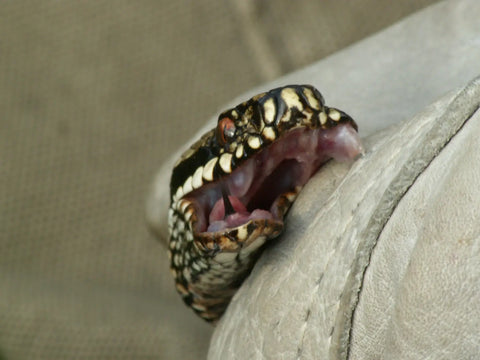
Generally speaking, snakes are not vulnerable to their own venom 😅. This is thanks to various mechanisms that prevent the toxins present in their venom from attaching to their cells, or to the structure of their venom gland, which prevents the substance from returning to the snake's mouth when it bites.
However, while venomous snakes are not vulnerable to their own venom, they are vulnerable to the venom of other venomous snakes.
How much snake venom is lethal?
The amount of snake venom required to be lethal varies significantly depending on the species of snake, the type of venom, the size and health of the victim, and how quickly treatment is received. Venom potency is often measured using the LD50 (Lethal Dose 50%) value, which represents the amount of venom needed to kill 50% of a sample population, typically mice, in lab tests. The lower the LD50 value, the more toxic the venom.
General Factors that Influence Lethality:
-
Type of Snake: Some snakes have venom that is more potent than others. For example:
- The inland taipan (also known as the "fierce snake") has one of the most potent venoms in the world. It can inject enough venom in a single bite to kill 100 adult humans or 250,000 mice, but it is rarely encountered by humans.
-
King cobras have highly neurotoxic venom and can inject large amounts (up to 7 mL), enough to kill an elephant or about 20 humans.
-
Amount of Venom Injected: Some snakes inject more venom than others. For instance, a rattlesnake or king cobra can inject a significant quantity of venom in one bite.
-
Size and Health of the Victim: Larger individuals and healthy adults may tolerate more venom than children, smaller people, or those with compromised health.
Lethal Doses for Some Venomous Snakes:
-
Inland Taipan (Oxyuranus microlepidotus): The most venomous snake by LD50 standards. Just 0.025 mg of its venom per kilogram of body weight can be lethal in mice. A single bite could theoretically kill 100 humans, though bites are extremely rare.
-
Black Mamba (Dendroaspis polylepis): One bite can deliver up to 120 mg of venom, and the lethal dose for humans is around 10–15 mg. Without antivenom, death can occur within 20 minutes to a few hours.
-
King Cobra (Ophiophagus hannah): This snake can inject up to 7 mL of venom, which contains neurotoxins and cardiotoxins. The lethal dose for humans is around 1.7 mL (about 1/4 of a teaspoon). Without antivenom, death can occur within 30 minutes to a few hours.
-
Rattlesnake (Crotalus spp.): The venom varies in potency, but a lethal dose for a human could be around 100–150 mg, depending on the species.
Approximate Lethal Venom Doses:
-
Neurotoxic Venoms (e.g., black mamba, taipans): Typically between 10 and 20 mg can be lethal to humans.
-
Hemotoxic Venoms (e.g., rattlesnakes, vipers): Around 100 mg to 150 mg can be lethal, though this varies based on species and bite location.
Other Influences on Lethality:
-
Location of Bite: A bite closer to vital organs, blood vessels, or the heart is more dangerous, as venom spreads more quickly.
-
Time to Treatment: Rapid administration of antivenom can prevent death even from highly venomous bites. Without treatment, even a less potent snake's bite can become fatal.
The lethal dose of snake venom depends on the snake species, the venom type, and the individual receiving the bite. For extremely venomous snakes like the inland taipan, a very small amount (less than 1 mg) can be lethal, while larger venom quantities are needed from species with less potent venom. However, prompt medical intervention and the use of antivenom can significantly reduce the chances of death.
2) The origins of snake venom
A) Why are snakes venomous?
Some snakes can use venom to attack prey or defend themselves against predators. Venom production is an ability that has developed over millions of years of evolution.
Snakes have existed for 54 million years and are present in ecosystems all over the world 🌏. Today, there are 200 different species of venomous snakes. The ability of some snakes to produce venom is the result of Random Mutations that have arisen over the course of evolution, and adaptations to the environment. These mutations have been conserved because they represent a major advantage!

Snake venom is thought to have evolved by copying certain harmless genes present at the origin of the species. Over time, these new copies acquired unique mutations, giving them a high toxicity ☠️. This process, by which a copy of a gene obtains a new function, different from the function of the original gene, is called Neofunctionalization.
You too can show your passion for these magnificent and deadly creatures, with our superb Dangerous Snake Men T-Shirt Collection or Stylish Snake Women T-Shirt Collection !

B) Adaptation to Venom
These new genes give the snake a survival advantage, so they are retained over time 🕰️.
But when a snake species becomes venomous (which takes millions of years), it doesn't hit the jackpot. The snake's prey and predators will over time develop resistance to the venom, or to the venomous species in question. This can take the form of better reflexes for dodging venomous animals 💨, better camouflage, and even Genetic Resistance to venom. So venomous snakes can't afford to stop adapting.
In fact, prey and predator face off in a never-ending struggle, a kind of “biological arms race” 🔫. And all this with small adjustments at the individual level, which select the animals best able to survive a venomous bite.

If these animals don't get killed by a venomous snake hiding under a rock, they'll have a better chance of reproducing and passing on their genetic heritage to their offspring. The result will be even more venom-resistant animals. Hence the need for permanent adaptation. CQFD. 👨🏻🔬
You too can show your passion for these magnificent and deadly creatures, with our superb Dangerous Snake Men T-Shirt Collection or Stylish Snake Women T-Shirt Collection !

Which snake has the deadliest venom?
The term "deadliest venom" can be interpreted in different ways, such as the potency of venom (measured by the LD50 value) or the potential amount of venom delivered in a bite. Here are a few snakes renowned for having the most dangerous venom:
1. Inland Taipan (Oxyuranus microlepidotus)
-
Venom Potency: The inland taipan, also known as the "fierce snake" or "small-scaled snake," has the most toxic venom of any snake. Its venom has an LD50 value of about 0.025 mg/kg in mice, which is extremely low and indicates high toxicity. In terms of venom potency, it’s considered the deadliest.
-
Bite Effects: The venom contains neurotoxins, hemotoxins, and procoagulants. Without prompt treatment, it can cause severe systemic effects, including bleeding, paralysis, and death. Fortunately, this snake is reclusive and rarely comes into contact with humans.
2. Black Mamba (Dendroaspis polylepis)
-
Venom Potency: The black mamba is one of the most feared snakes due to its highly neurotoxic venom. It has an LD50 of about 0.1 mg/kg in mice, which is also extremely toxic. It is capable of delivering a large amount of venom in a single bite.
-
Bite Effects: The venom causes rapid paralysis and respiratory failure. Without antivenom, a bite can be fatal within 20 minutes to a few hours.
3. King Cobra (Ophiophagus hannah)
-
Venom Potency: The king cobra has potent venom but is somewhat less toxic by weight compared to the inland taipan or black mamba. Its venom has an LD50 of around 0.1 mg/kg in mice. However, it can inject a large volume of venom (up to 7 mL).
-
Bite Effects: Its venom is neurotoxic and can lead to respiratory failure and cardiac arrest. Death can occur within 30 minutes to a few hours without treatment.
4. Eastern Brown Snake (Pseudonaja textilis)
-
Venom Potency: The eastern brown snake is responsible for the most snakebite deaths in Australia. It has a very toxic venom with an LD50 of about 0.053 mg/kg in mice.
-
Bite Effects: The venom is hemotoxic and anticoagulant, causing bleeding, kidney failure, and in severe cases, death if untreated.
5. Tiger Snake (Notechis scutatus)
-
Venom Potency: Tiger snakes have highly toxic venom, with an LD50 value of about 0.05 mg/kg in mice.
-
Bite Effects: The venom contains both neurotoxins and hemotoxins, leading to paralysis, bleeding disorders, and death if not treated promptly.
C) Humans and snakes
Today, humans play a major role in the evolution of venom in all snake species. This evolution is largely due to climate change, and human activity 🏭. These two factors continually modify the ecosystems where snakes live.
Snakes stay in their natural habitat and adapt to cities, which are growing along with the human population. Snakes have also been observed to migrate further north, as the world warms up.
These developments could lead to an increased risk of Snake Attacks and Bites in the future, as witnessed by accidents with man-eating Reticulated Pythons in Indonesia 😱.
With this adaptation to humans, some snakes will become even more venomous, while others will lose the ability to produce venom.
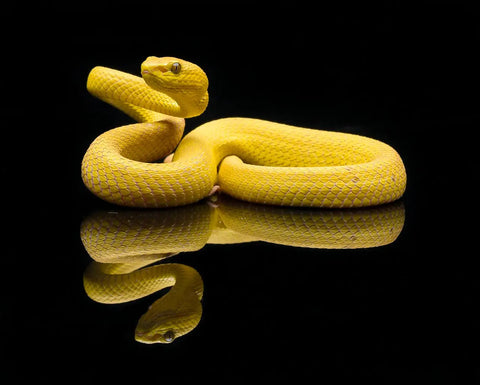
3) Venomous snakes
A) Why are some snakes more venomous than others?
Perhaps you've already heard (or read) something like “this snake has enough venom to kill 100 people”. But how do you really measure an animal's toxicity?
The most venomous snake for humans is the Desert Taipan, which has enough venom to kill around 200 people 😧. But there are many other species dangerous to humans.
Of course, you can imagine that this has never been tested on humans! Instead, small quantities are tested on mice, and from there we estimate how the results might extend to humans.
⚠️ These figures should be treated with caution! Toxicity is a relative concept and can vary considerably from one species to another. For example, some snake venoms are much more effective against reptiles than mammals.
This difference could be explained by the fact that snakes with such a venom are more likely to kill reptiles quickly, if they live in an area with many lizards 🦎.

B) Why aren't all snakes venomous?
It's worth asking, given that venom is a highly effective survival tool 🤔.
Producing venom requires a lot of energy. Consequently, its production needs to bring more food into the snake's belly, in order to make production profitable. Sometimes, the fact that a snake is venomous simply doesn't help it catch more prey ❌. So over time, this species' ability to produce venom will disappear, as it takes up energy for nothing.
You too can show your passion for these magnificent and deadly creatures, with our superb Dangerous Snake Men T-Shirt Collection or Stylish Snake Women T-Shirt Collection !

A concrete example: the Loss of Venom observed in pythons and anacondas. For these two species, constriction is now their main method of acquiring food.
There are also “evolution's clever kids”: non-venomous snakes that take on the appearance of extremely venomous snakes, to guarantee their survival 👍. This cheap trick is highly beneficial: it saves the copier the extra energy expenditure involved in venom production. A classic example is the Milk Snake. This harmless species sports a color pattern very similar to that of the Coral Snake, an extremely venomous species.

C) Venom: the root cause of our fear of snakes
Fear of envenomation is hereditary. It was passed on to us by our ancestors because those who avoided venomous snakes were more likely to live to a ripe old age 🦴. So as well as facilitating hunting and predation, venom can also be an effective defense strategy, thanks to psychological deterrence.
If an animal injects Painful Venom when attacked, its attacker will think twice before hunting it again. And in the case of lethal venom, the predator will never be able to hunt again...
The feeling of danger and the fear of being bitten can be passed on to the descendants of the snake's predators. Studies indicate that snakes have thus influenced the brain development of primates (of which we are one). Experiments with macaques 🐒 who had never encountered a snake, proved the presence of a Stress reaction linked to the vision of an image, or an object resembling a snake.
Similarly, you may have seen videos of cats overreacting to the sight of cucumbers 🥒. It's possible that cucumbers induce the same kind of response in cats' brains as snakes do in monkeys' brains. And you suspected that those funny videos were actually hiding a Survival Mechanism?
You too can show your passion for these magnificent and deadly creatures, with our superb Dangerous Snake Men T-Shirt Collection or Stylish Snake Women T-Shirt Collection !

What are the four types of venom?
Snake venom is typically categorized into four main types based on its effects on the body. Each type of venom targets different physiological systems and causes various symptoms. Here’s a breakdown of the four main types of venom:
1. Neurotoxic Venom
-
Targets: Nervous System
-
Effects: Neurotoxic venom affects the nervous system, interfering with nerve signals and causing paralysis. This type of venom can lead to respiratory failure and death if it affects the muscles involved in breathing.
-
Symptoms:
- Muscle weakness or paralysis
- Difficulty breathing
- Blurred vision
- Drooping eyelids
-
Examples: Black Mamba, King Cobra, Krait, Coral Snake
2. Hemotoxic Venom
-
Targets: Blood and Circulatory System
-
Effects: Hemotoxic venom disrupts blood clotting and damages blood vessels, leading to internal bleeding, tissue damage, and organ failure. It can cause severe hemorrhaging and sometimes lead to shock or death.
-
Symptoms:
- Severe pain and swelling at the bite site
- Internal bleeding
- Tissue necrosis (death of tissue)
- Kidney damage
-
Examples: Rattlesnakes, Vipera (e.g., European Vipera), Pit Vipers
3. Cytotoxic Venom
-
Targets: Cells and Tissues
-
Effects: Cytotoxic venom causes direct damage to cells and tissues around the bite site. This type of venom can lead to severe local pain, swelling, blistering, and tissue necrosis.
-
Symptoms:
- Severe localized pain
- Swelling and blistering
- Tissue death and necrosis
- Possible permanent scarring
-
Examples: Some Cobras, Many Vipers, Some Pit Vipers
4. Cardiotoxic Venom
-
Targets: Heart and Cardiovascular System
-
Effects: Cardiotoxic venom affects the heart, potentially causing irregular heartbeats, heart failure, and cardiovascular collapse. This type of venom can disrupt heart function and lead to severe cardiovascular issues.
-
Symptoms:
- Heart palpitations
- Irregular heartbeats or arrhythmias
- Low blood pressure
- Cardiac arrest
-
Examples: King Cobra, Some Pit Vipers
4) Venom and Medicine
Snake venom has always played a central role in medical history. In fact, the snake became a symbol of medicine in the form of the Staff of Asclepius ⚕️, the Greek god of healing and medicine.
A) Effects of snake venom on humans
Snake venom is one of the most studied, due to the medical importance of snakebite. Every year, these animals kill over 150,000 people worldwide, and leave 400,000 to be amputated 😓.
Snake venom stops the body's internal communication. It's made up of a cocktail of venomous substances that can have completely different functions depending on each snake. The mamba and cobra use a Nervous Toxin that blocks nerve-muscle communication, limiting the victim's ability to move or breathe.
In theory, the human body can defend itself against the venom by producing antibodies. The problem is that it takes a week to produce an adequate quantity ⌚ whereas some venoms kill in less than 2 hours... All the more so as snake venom is composed of Stealth Molecules. This means it's undetectable by the body, until it starts attacking the nervous system.
It's your lucky day! From now on, you too can wear these magnificent Snake Six-pointed Pendant.

B) Anti-venom
Today, there are a number of Antivenins that act against snakebites 💉 but snakebites remain a major problem in many developing countries. But snakebites remain a major problem in many developing countries. Existing antivenom drugs have recently been added to the World Health Organization's (WHO) list of essential medicines.
To develop the anti-venom serum, the snake is first “milked” in Serpentariums to recover this toxic liquid. Snake handlers extract the venom from the reptile's hollow fangs, embedded in its upper jaw. The venom is then dried and sold for between $300 and $1,000 a gram 💰.
To make antivenom, snake venom is then injected into animals, usually horses 🐎 These animals produce antibodies that act against the venom's toxins. These animals produce antibodies that act against the venom toxins.
The antibodies mature in the horse's body and are then extracted and purified before being injected into humans in the form of serums 😮. This process saves lives. But unfortunately it's not always feasible, and some people may suffer from undesirable side effects caused by antibodies developed in animals, such as Serum Sickness (a bit like an Allergic Reaction that requires taking an Antihistamine). In the most serious cases, this can lead to anaphylactic shock, requiring rapid first aid and a trip to the emergency room, or death.
Today, even if it remains difficult to manufacture effective antidotes, scientists now know how snake venom works 👩🔬. It always acts in the same way on the human organism, which is its great strength, but also its weakness. This could lead to the development of more effective antivenoms in the future. The idea of an antivenom that works against all snakes in the same region (Africa, Asia, America, etc.) is now very realistic.
C) Venom Immunity
A Rock Singer, Steve Ludwin, had the crazy idea of injecting himself daily with venom from the world's 35 most venomous snake species 😱! He's been practicing this for 25 years to boost his immune system. The singer is putting his life at risk, but his crazy experience is invaluable to research. A team of scientists at the University of Copenhagen recently created an “Antibody Library”, made up of copies of antibodies that Ludwin's immune system generated in response to his snake venom injections. The library is now being used to identify antibodies that can neutralize the toxins in the venom ⚔️. Some of these could be used to develop antivenoms to treat snakebites.
But the idea of ingesting snake venom to develop immunity to it is not new. Mithridates VI, an ancient king, is said to have been so afraid of being assassinated by poison that he ingested small quantities of venom and poison for years 🍸. According to legend, this enabled him to develop Immunity. He is also credited with being the originator of an early antidote, as he made the “Mithridate Remedy”. This substance was a mixture of antidotes against known venomous reptiles, and against various toxic substances.
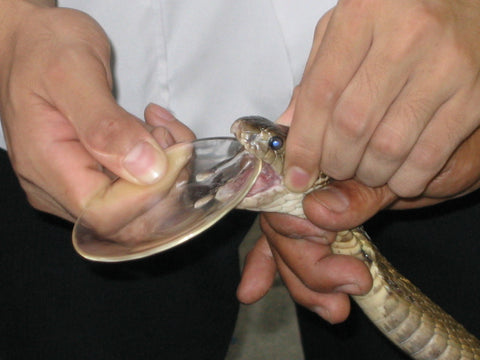
5) The Virtues of Snake Venom
Each snake venom contains a different Molecular Cocktail 🥃. The result is a large number of chemicals found nowhere else in nature, which can affect the blood, muscles or central nervous system. Scientists have discovered a wide range of applications for these chemicals.
It's your lucky day! From now on, you too can wear these magnificent Snake Six-pointed Pendant.

A) Snake venom as medicine
Throughout history, humans have used toxins for medicinal purposes. Today, modern medicine is taking inspiration from the vast quantity of toxins present in snake venom, to develop New Medicines 👍. Despite the potential of drugs derived from this toxic substance, only seven have been approved to date.
Indeed, it's very complicated to develop toxin-derived drugs. As with other drugs, it takes many years from initial discovery to commercialization. Many projects fail in the “pre-clinical” phase, or are interrupted in the clinical phase 🏥 due to lack of efficacy or Side Effects.
It's your lucky day! From now on, you too can wear these magnificent Snake Six-pointed Pendant.

The applications of snake venom in the medical field are many and varied:
Snake Venom against Cancer: rattlesnake venom contains a chemical called Crotoxin, which has the ability to target and kill cancer cells in an organism 💀. The CB24 cancer treatment, is made from the venom of this snake.
Snake Venom against Blood Pressure: the venom of the Brazilian viper Bothrops Jararaca (or “Yellow Spearhead Viper”), contains a protein that blocks an enzyme responsible for blood pressure in humans and mammals.
Snake venom for diabetes: The venom of the previous species could also be used to treat type 2 diabetes.
Snake venom against Nervous System Disorders: the neurotoxins contained in Black Mamba venom could prove useful in the treatment of diseases such as Alzheimer's and Parkinson's.
Snake venom and morphine: Black Mamba venom is said to have analgesic properties comparable to morphine. However, the venom is not addictive, which is currently the main drawback of morphine. Goodbye morphine, hello Mambalgin! (True 😂).
Snake venom for neuromuscular disorders: in the 1960s, scientists discovered the molecular mechanism behind a serious muscle disease called Myasthenia, using the venom of the Taiwanese Banded Krait.
Antivenom manufacture: it may seem obvious, but no antivenom without venom 💁. However, the process of collecting venom and developing an antidote is laborious. It has remained virtually unchanged since the late 1800s.
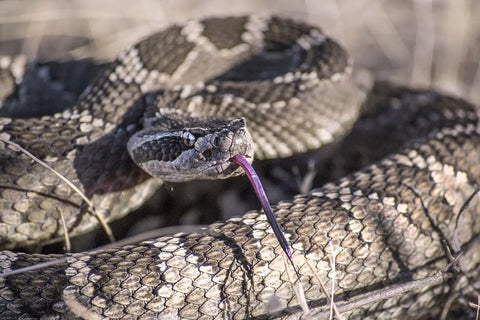
B) Snake venom in cosmetics
Incredible as it may seem, snake venom has become indispensable in the pharmaceutical industry, particularly in the form of creams and ointments. This is mainly due to its high content of enzymes, peptides and specific amino acids.
Originally, it was mainly used to treat inflammation and pain thanks to its Analgesic 😴 effect. Today, the use of this special ingredient has expanded considerably. It helps to combat a number of ailments:
- Rheumatism
- Varicose veins
- Inflammation of muscles and tendons
- Epilepsy
- Snake venom has been proven to be a highly beneficial agent in the treatment of psoriasis and skin infections.
The most recent research has led to the use of snake venom in the cosmetics industry 🧴. A synthetic form of snake venom has been developed by Swiss scientists under the name SYN-AKE. This snake venom-based product is claimed to relax facial muscles and prevent the appearance of Wrinkles. Unlike botox, which paralyzes muscles, it should enable facial movements and expressions. This anti-aging cream is said to work a little like a facial moisturizer.
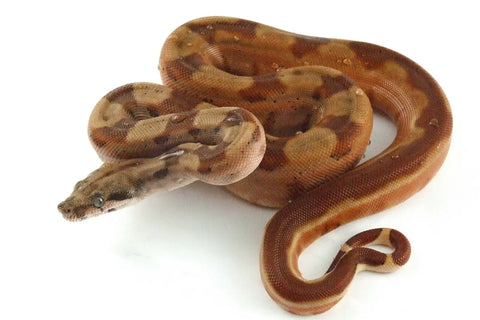
Snake venom is now present in many expensive cosmetics 💲. It appears (or is touted) as a quick, safe, effective and painless alternative to the usual Anti-Aging Treatments. These same treatments, such as botulinum toxin, are the subject of debate as to their harmfulness to the body. However, to date, few scientific studies have been conducted to verify the positive effects of snake venom cosmetics...
It's your lucky day! From now on, you too can wear these magnificent Snake Six-pointed Pendant.

So, although we fear venomous snakes, which are generally the most dangerous snakes, snake venom is proving to have many virtues, particularly in the medical and pharmaceutical fields 💊.
At Snake Label® we want to honor these magnificent but often misunderstood reptiles. We want to change the negative view of snakes held by most people. Our passion for these animals shines through in our snake-themed clothing, jewelry and accessories.
Dive into the fascinating world of snakes and explore our other articles now!
Stay Updated!
Don't miss out on the latest insights, tips, and exclusive content. Subscribe to our blog newsletter today and be the first to know about new posts, special offers, and more!
Join our community now—just enter your email below to stay connected.